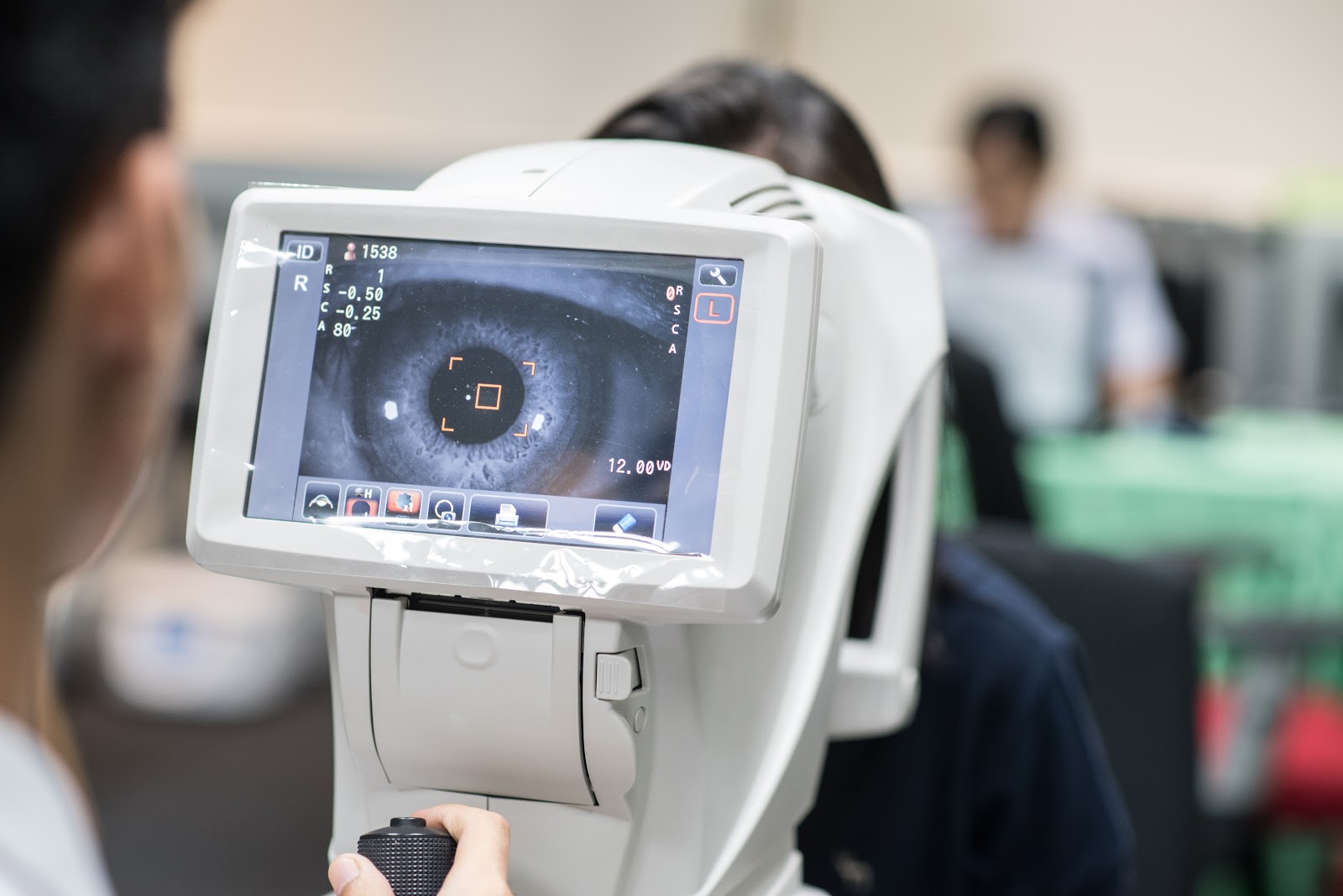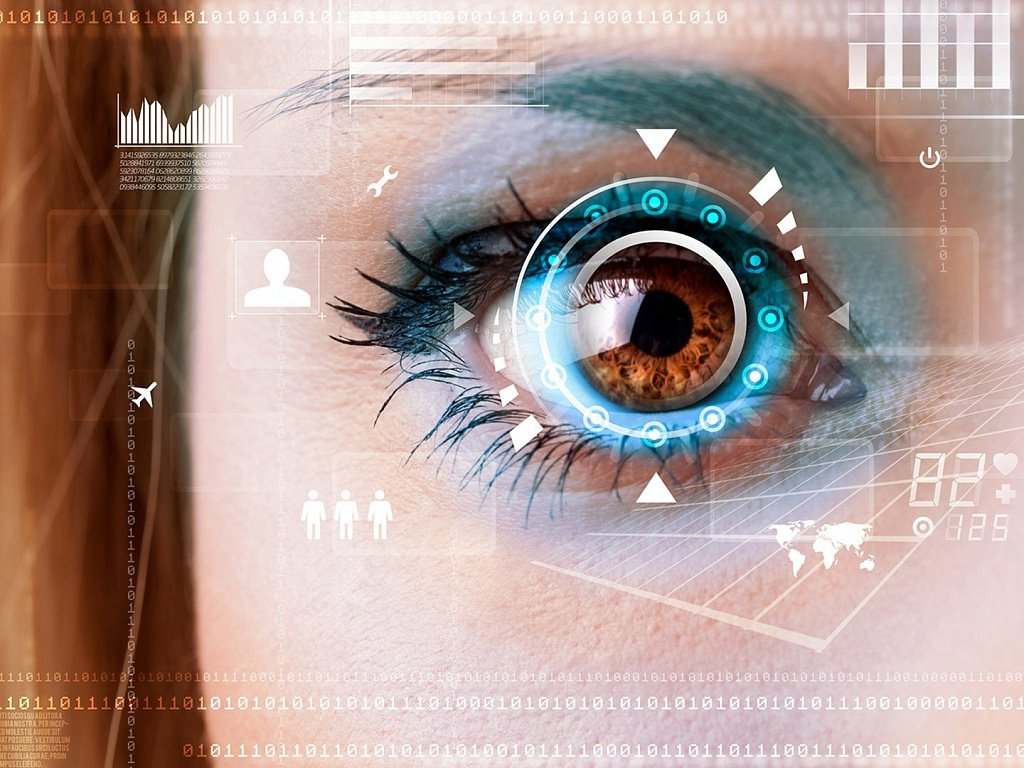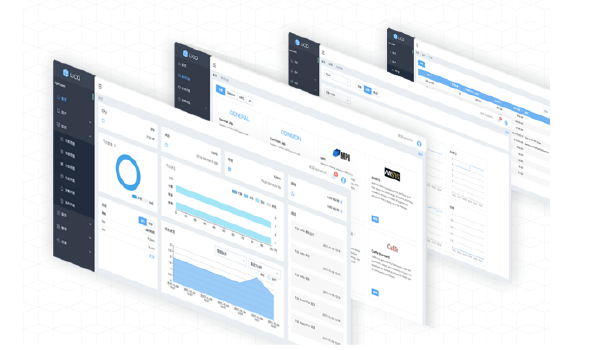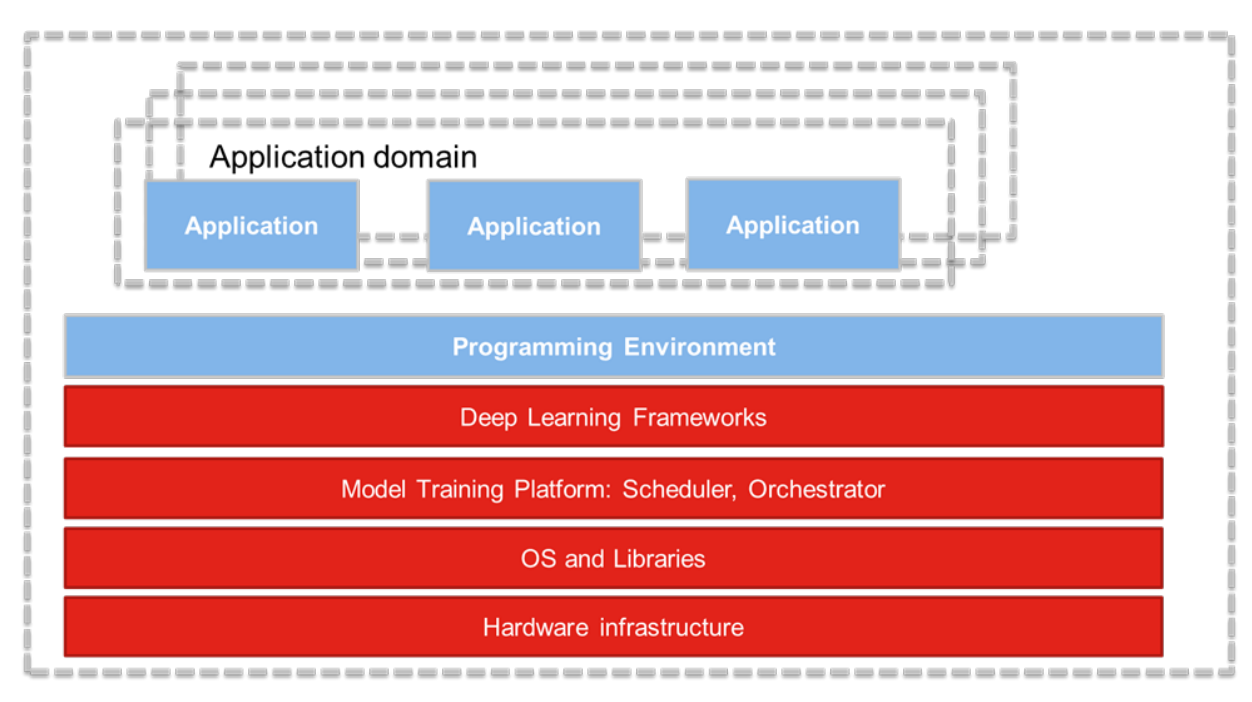Artificial intelligence helps preserve vision.
- Transfer
The use of artificial intelligence in medicine today can significantly improve the accuracy of diagnosis, make life easier for patients. It is expected that AI will be indispensable in the diagnosis and clarification of diseases. Due to the ability to compare data, collect and synthesize information, the participation of AI in diagnostics should help to qualitatively improve the statistics of medical errors, increase the role of prevention and prevention of diseases.

According to the forecast of research company Research & Markets, the global market for artificial intelligence will grow to $ 5.05 billion by 2020. In this case, the fastest growing segment will be just healthcare. According to international studies , the use of artificial intelligence in medicine can increase the profits of companies in the healthcare industry.
In 2016, the share of the European market of AI was estimated at $ 270 million, with expected annual growth of more than 35%. According to estimates of BIS Research , by 2025 the total market of AI in healthcare will reach 28 billion dollars with an average annual growth of more than 45.1%, and the market of AI for medical imaging and diagnostics will amount to 2.5 billion dollars.
According to the World Health Organization ( World Health Organization ), vision problems directly affect almost every twentieth inhabitant of the planet, and about 80% of such problems could be avoided through preventive measures. For example, it is very important to detect diseases of the retina at an early stage, but ophthalmologists lack the resources to carefully study and diagnose the disease. Artificial intelligence can help them in this and thus save the vision of millions of patients.
Complications of diabetes (diabetic retinopathy) are one of the leading causes of vision problems. The total number of people with diabetes is expected to double between 2000 and 2030 , greatly increasing the incidence of eye diseases worldwide.

Early diagnosis by more than half reduces the number of cases of severe vision loss. Unfortunately, there is little progress in detecting diseases of the retina in the early stages during the examination of patients. In countries that suffer most from these diseases, patients do not undergo regular check-ups, and ophthalmologists have a rather low accuracy of correct recognition and diagnosis of retinal disease during individual in-depth eye examinations. At the same time, unlike other life-threatening diseases that are widely known today, retinal diseases and visual impairment remain not so noticeable in the eyes of the public. Therefore, the problem is often underestimated.
Artificial Intelligence (AI) can potentially contribute to significantly reducing the incidence of retinal diseases, helping ophthalmologists to more effectively detect the disease and complementing human experience. In collaboration with Lenovo at the Barcelona Supercomputing Center (BSC), it was decided to investigate how AI can improve the accuracy of the screening process and potentially detect retinal disease earlier than it usually happens. AI technology increases the likelihood of early detection of the disease, making examination of patients more accessible and faster in countries with insufficient coverage of the population. Moreover, patients can independently undergo a primary examination within a few minutes using their smartphone with a special application.

The future of medicine is disease prevention. Therefore, it is important to improve the accuracy of preliminary diagnostics.
In addition to diabetic retinopathy, eye diseases cause many other pathologies, such as glaucoma, macular degeneration, nevus and epiretinal membrane. Machine learning models allow these different pathologies to be identified much more easily than current screening methods. Dario García-Gasulla, an honorary researcher at the Barcelona Supercomputer Center, is optimistic about the possibilities of using this technology: “Scaling, training and validation of machine learning models to study these vision problems can be a difficult process. But the potential is enormous, since the same approaches can be applied in other areas of medicine and in many industrial applications. ”
The problem with learning the AI model to detect certain diseases of the retina is the lack of “clean” data available for training the neural network. For pathologies with limited availability of a dataset (for example, less than 5000 images), reliable deep learning of a neural network from scratch may not be possible. In this case, you can use the "transfer of learning."

Automation will give the doctor extra time that he will be able to use to study the patient's illness and establish the most accurate diagnosis. According to experts from the Harvard Medical School, the use of AI technologies will reduce the level of errors in diagnosis by 85%.
The transfer of training is based on models prepared for tasks with larger data sets, which are then reused to solve other problems with little data availability. Sometimes it is used to highlight the signs (extractor). As a result, the transfer of training can also shorten the training time (to minutes), save hours of research and, ultimately, the costs associated with developing a solution.

Accuracy of detection of various pathologies of the retina using AI is 75-91%.
At the International Supercomputer Conference (ISC) in Frankfurt, Lenovo and BSC will show an application demonstrating how the training transfer works. It was created at the Lenovo AI Innovation Center in Morrisville, pc. North Carolina (USA). The application will allow visitors through an intuitive interface to independently build and train a model and thus play an active role in improving the screening of retinal diseases.
Garcia-Gasulla explains: “The purpose of the demonstration is to show how easy it is to use pre-trained deep neural networks as feature extractors that become the basis for other, simpler and faster models (in this case, SVM). In 10 minutes, each participant will be able to design, train and test the effectiveness of the machine learning model to identify retinal pathology. The models of conference participants working with the same pathology will be compared and evaluated in order to find and award the best model developed during this forum. ”

LiCO accelerates the training of artificial intelligence models and the traditional deployment of high-performance computing systems, providing an intuitive user interface for managing software and hardware stack.
Smart medical products, services and processes are already being developed by more than 800 companies, including leading vendors. For such research, Lenovo is creating its own AI solutions , including the recently launched Lenovo Intelligent Computing Orchestration (LiCO) 5.1 Platform platform and the Lenovo AI Validated Design reference architecturefor developing models on the Intel Xeon Scalable architecture and NVIDIA Tesla.

Components of learning model. The AI software stack is developing rapidly, new and updated frameworks appear almost monthly. Choosing from numerous open source options can take a long time. Lenovo's reference architecture has been tested and configured based on the Lenovo ThinkSystem platform.
The use of artificial intelligence in medicine can revolutionize the healthcare industry through the development of such areas as personalized medicine, diagnostics, the development of new drugs, robot-assisted surgery, telemonitoring of chronic diseases, remote patient care, support for making correct medical decisions, identifying medical errors. Frost & Sullivan
agency notes that artificial intelligence technologies increase the accuracy of diagnosis by 30–40%, while the cost of medical care is reduced by half. McKinsey showed that in medicine it is possible to automate 36% of functions, primarily at the levels of data collection and analysis.
Developments in this direction are actively being conducted both abroad and in Russia, for example, one of the Russian projects is a system for diagnosing diseases, which includes the recognition of pathologies using medical digital images obtained from the results of pulmonary X-ray, mammography, computed tomography and ultrasound. The project is an application that can be used on a user's computer or smartphone. It works on the basis of a neural network trained to recognize pathologies in medical images. The first stage of the project is an analyzer of abnormal blood cells and recognition of fundus pathologies. In the future, it will cover such areas as radiography of the lungs, mammography, computed tomography, mobile ultrasound.
And new projects appear almost every year. Many designs are available now. For example, in Russia, the CoBrain Analytics information and analytical system was launched to make diagnoses and develop personal therapy for patients with brain diseases. Artificial intelligence in medicine is a future that has already arrived.

According to the forecast of research company Research & Markets, the global market for artificial intelligence will grow to $ 5.05 billion by 2020. In this case, the fastest growing segment will be just healthcare. According to international studies , the use of artificial intelligence in medicine can increase the profits of companies in the healthcare industry.
In 2016, the share of the European market of AI was estimated at $ 270 million, with expected annual growth of more than 35%. According to estimates of BIS Research , by 2025 the total market of AI in healthcare will reach 28 billion dollars with an average annual growth of more than 45.1%, and the market of AI for medical imaging and diagnostics will amount to 2.5 billion dollars.
AI and the problem of retinal diseases
According to the World Health Organization ( World Health Organization ), vision problems directly affect almost every twentieth inhabitant of the planet, and about 80% of such problems could be avoided through preventive measures. For example, it is very important to detect diseases of the retina at an early stage, but ophthalmologists lack the resources to carefully study and diagnose the disease. Artificial intelligence can help them in this and thus save the vision of millions of patients.
Complications of diabetes (diabetic retinopathy) are one of the leading causes of vision problems. The total number of people with diabetes is expected to double between 2000 and 2030 , greatly increasing the incidence of eye diseases worldwide.

Early diagnosis by more than half reduces the number of cases of severe vision loss. Unfortunately, there is little progress in detecting diseases of the retina in the early stages during the examination of patients. In countries that suffer most from these diseases, patients do not undergo regular check-ups, and ophthalmologists have a rather low accuracy of correct recognition and diagnosis of retinal disease during individual in-depth eye examinations. At the same time, unlike other life-threatening diseases that are widely known today, retinal diseases and visual impairment remain not so noticeable in the eyes of the public. Therefore, the problem is often underestimated.
Under the gaze of artificial intelligence
Artificial Intelligence (AI) can potentially contribute to significantly reducing the incidence of retinal diseases, helping ophthalmologists to more effectively detect the disease and complementing human experience. In collaboration with Lenovo at the Barcelona Supercomputing Center (BSC), it was decided to investigate how AI can improve the accuracy of the screening process and potentially detect retinal disease earlier than it usually happens. AI technology increases the likelihood of early detection of the disease, making examination of patients more accessible and faster in countries with insufficient coverage of the population. Moreover, patients can independently undergo a primary examination within a few minutes using their smartphone with a special application.

The future of medicine is disease prevention. Therefore, it is important to improve the accuracy of preliminary diagnostics.
In addition to diabetic retinopathy, eye diseases cause many other pathologies, such as glaucoma, macular degeneration, nevus and epiretinal membrane. Machine learning models allow these different pathologies to be identified much more easily than current screening methods. Dario García-Gasulla, an honorary researcher at the Barcelona Supercomputer Center, is optimistic about the possibilities of using this technology: “Scaling, training and validation of machine learning models to study these vision problems can be a difficult process. But the potential is enormous, since the same approaches can be applied in other areas of medicine and in many industrial applications. ”
Model training and overcoming data shortages
The problem with learning the AI model to detect certain diseases of the retina is the lack of “clean” data available for training the neural network. For pathologies with limited availability of a dataset (for example, less than 5000 images), reliable deep learning of a neural network from scratch may not be possible. In this case, you can use the "transfer of learning."

Automation will give the doctor extra time that he will be able to use to study the patient's illness and establish the most accurate diagnosis. According to experts from the Harvard Medical School, the use of AI technologies will reduce the level of errors in diagnosis by 85%.
The transfer of training is based on models prepared for tasks with larger data sets, which are then reused to solve other problems with little data availability. Sometimes it is used to highlight the signs (extractor). As a result, the transfer of training can also shorten the training time (to minutes), save hours of research and, ultimately, the costs associated with developing a solution.

| Pathology | Accuracy Detection |
|---|---|
| Glaucoma | 85.5% |
| Retinal pigmentation | 75.1% |
| Epiretinal membrane | 78.8% |
| Nevus eyes | 65.0% |
| Macular dystrophy | 91.07% |
Accuracy of detection of various pathologies of the retina using AI is 75-91%.
New AI technology
At the International Supercomputer Conference (ISC) in Frankfurt, Lenovo and BSC will show an application demonstrating how the training transfer works. It was created at the Lenovo AI Innovation Center in Morrisville, pc. North Carolina (USA). The application will allow visitors through an intuitive interface to independently build and train a model and thus play an active role in improving the screening of retinal diseases.
Garcia-Gasulla explains: “The purpose of the demonstration is to show how easy it is to use pre-trained deep neural networks as feature extractors that become the basis for other, simpler and faster models (in this case, SVM). In 10 minutes, each participant will be able to design, train and test the effectiveness of the machine learning model to identify retinal pathology. The models of conference participants working with the same pathology will be compared and evaluated in order to find and award the best model developed during this forum. ”

LiCO accelerates the training of artificial intelligence models and the traditional deployment of high-performance computing systems, providing an intuitive user interface for managing software and hardware stack.
Smart medical products, services and processes are already being developed by more than 800 companies, including leading vendors. For such research, Lenovo is creating its own AI solutions , including the recently launched Lenovo Intelligent Computing Orchestration (LiCO) 5.1 Platform platform and the Lenovo AI Validated Design reference architecturefor developing models on the Intel Xeon Scalable architecture and NVIDIA Tesla.

Components of learning model. The AI software stack is developing rapidly, new and updated frameworks appear almost monthly. Choosing from numerous open source options can take a long time. Lenovo's reference architecture has been tested and configured based on the Lenovo ThinkSystem platform.
AI in medicine: the future has come
The use of artificial intelligence in medicine can revolutionize the healthcare industry through the development of such areas as personalized medicine, diagnostics, the development of new drugs, robot-assisted surgery, telemonitoring of chronic diseases, remote patient care, support for making correct medical decisions, identifying medical errors. Frost & Sullivan
agency notes that artificial intelligence technologies increase the accuracy of diagnosis by 30–40%, while the cost of medical care is reduced by half. McKinsey showed that in medicine it is possible to automate 36% of functions, primarily at the levels of data collection and analysis.
Developments in this direction are actively being conducted both abroad and in Russia, for example, one of the Russian projects is a system for diagnosing diseases, which includes the recognition of pathologies using medical digital images obtained from the results of pulmonary X-ray, mammography, computed tomography and ultrasound. The project is an application that can be used on a user's computer or smartphone. It works on the basis of a neural network trained to recognize pathologies in medical images. The first stage of the project is an analyzer of abnormal blood cells and recognition of fundus pathologies. In the future, it will cover such areas as radiography of the lungs, mammography, computed tomography, mobile ultrasound.
And new projects appear almost every year. Many designs are available now. For example, in Russia, the CoBrain Analytics information and analytical system was launched to make diagnoses and develop personal therapy for patients with brain diseases. Artificial intelligence in medicine is a future that has already arrived.
